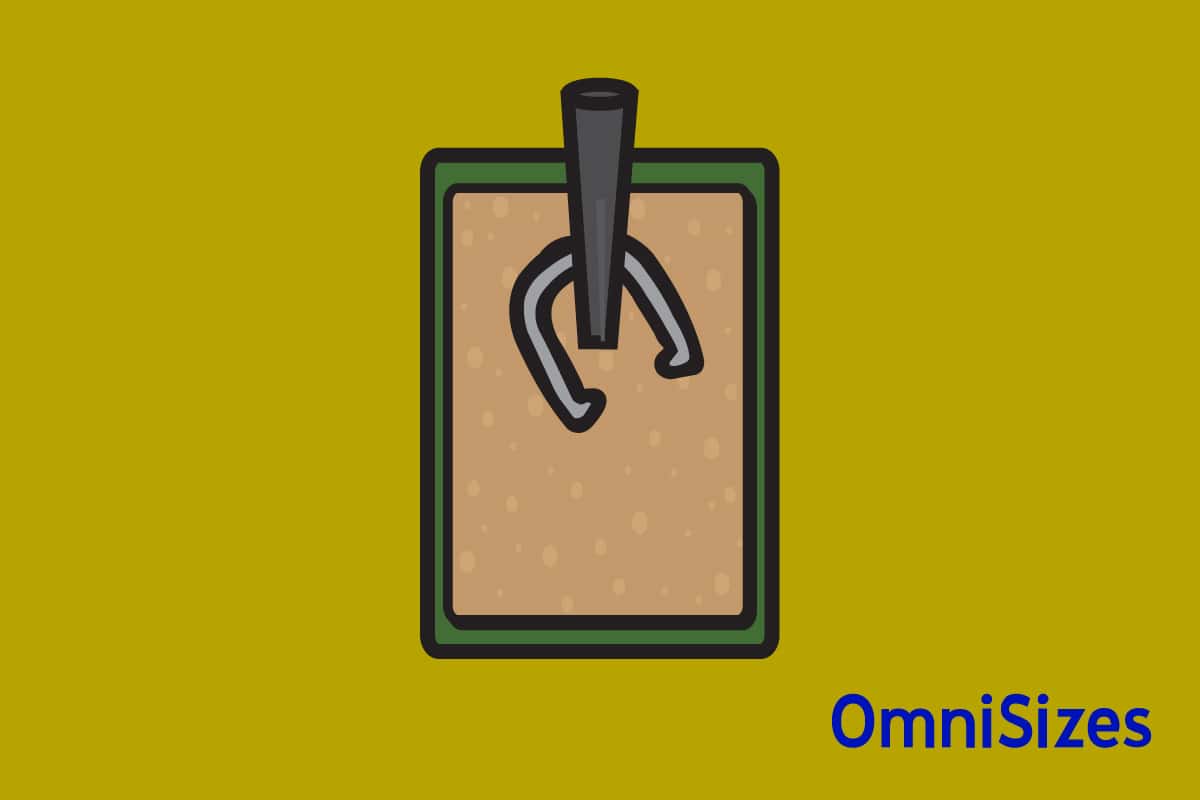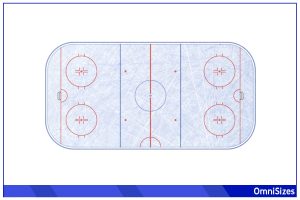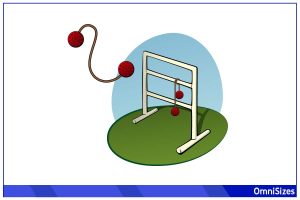Horseshoe pitching is a classic game enjoyed in backyards and tournaments alike, blending skill, strategy, and outdoor fun. A key element of this game is the horseshoe pit dimensions, which dictate the layout and size of the playing area.
A standard horseshoe pit measures about 3 × 6 feet for the pit area on a court measuring 6 × 46 feet, with stakes placed 40 feet apart from each other. The stakes should be about 14 to 15 inches above the ground.
This article will delve into the specifics of designing and constructing a horseshoe pit. It covers everything from standard dimensions to the basics of playing this backyard game.
What Is a Horseshoe Pit?
A horseshoe pit is part of ring toss or horseshoe pitching, an outdoor game area designed for playing horseshoes. It consists of a flat, rectangular space where players toss horseshoes towards a stake at either end. The game’s objective is to throw the horseshoes so they land around the stake or as close as possible to it.
Standard Horseshoe Pit Dimensions

The National Horseshoe Pitchers Association (NHPA) has strict guidelines regarding the measurements of a regulation pitch. Here’s a quick breakdown of those measurements:
Court Dimensions
The standard horseshoe court is a rectangular playing area measuring 6 feet wide and 46 feet long. Including a 2-foot buffer zone along each side and behind each pitching box for safety, the total court area becomes 10 feet wide and 50 feet long.
Pitcher’s Box
The pitcher’s box is a crucial component, measuring 6 × 6 feet at each court end. It comprises the Pit and the Pitching Platforms, with its back being 46 feet from the opposite box.
The Pit
The pit, where horseshoes are pitched, has varying dimensions: a maximum inside length of 72 inches and a minimum of 43 inches, with a width between 31 and 36 inches. Positioned centrally along the court’s lengthwise centerline, the pit is midway between the full-distance pitching platforms.
Stakes
Stakes are the targets in horseshoe pitching. Positioned centrally in the pitcher’s box, they are spaced 40 feet apart, measured from the front of each stake. Stakes are 1 inch in diameter and made of materials like steel or approved synthetic substances. They stand 14 to 15 inches above the pitching platforms.
Foul Lines
Foul lines are straight lines across the platforms, measured at 37 feet and 27 feet from the opposite stakes. A single 20-foot foul line marks the midpoint between stakes.
Summary Table
| Feature | Measurement |
| Court Dimensions | 6 feet wide × 46 feet long; Total area with buffer: 10 feet wide × 50 feet long |
| Pitcher’s Box | 6 feet × 6 feet |
| The Pit | Length: 43-72 inches; Width: 31-36 inches |
| Pitching Platforms | Full-Distance: 18-20.5 inches wide, 6 feet long; Short-Distance: Extendable to full court length |
| Stakes | Distance between stakes: 40 feet; Height above platform: 14-15 inches |
| Foul Lines | 37 feet, 27 feet, and 20 feet from opposite stakes |
| Backstops/Backboards | Minimum 3 feet behind stake, 1 foot high, width of the pit |
| Protective Barrier | Minimum 8 feet behind stakes, at least 4 feet high |
| Pit Substance Depth | Minimum 4 inches; Recommended 8 inches |
| Overhead Clearances | Minimum 12 feet above playing area |
Building a Smaller Horseshoe Pit
Many of us don’t have 10 × 50 feet of empty space in our backyards to construct a regulation horseshoe pitching court. Don’t worry; you can build a smaller one on whatever space you have, as long as you follow these size adjustment suggestions:
Example Measurements for Smaller Courts
A typical horseshoe pit is 6 feet wide and 46 feet long. For a smaller pit, consider reducing the length while maintaining the width for balance. For example, a court that’s 6 feet wide and 30 feet long works well in smaller yards.
Constructing the Pit
- Mark the reduced dimensions of your pit.
- Remove any grass and level the ground.
- Install the stakes at a reduced distance, such as 20 feet apart, centered in each pit area.
- Frame the pit areas and fill with sand or clay.
Adjusting Gameplay
- In a smaller pit, modify the rules slightly. For example, adjust the scoring to accommodate the shorter distance between stakes.
- Practice pitching from the reduced distance to adapt to the compact space.
How to Play Horseshoe Pitching
Even if you don’t plan on joining an amateur league, that doesn’t mean you can’t enjoy this classic backyard game. Here’s a brief explanation of how you can play horseshoe pitching.
Materials and Tools Needed
- Horseshoes: Typically, each player or team needs two horseshoes. These are made of metal and are designed to encircle the stakes in the pit.
- Stakes: These are the targets in the horseshoe pits. They are placed at a standard distance apart in the center of the pits.
- Horseshoe Pit: This includes the pitcher’s boxes and the pits where the stakes are located.
- Measuring Tool: A simple measuring tape or a pre-measured cord can help resolve close calls when scoring.
- Scorekeeping Method: This can be as simple as a notepad and pencil, a chalkboard, or a mobile scoring app.
Basic Rules of the Game
- Objective: The goal is to throw your horseshoes as close as possible to the stake, or even better, to encircle it (a “ringer”).
- Players: Horseshoe pitching can be played one-on-one or in teams of two.
- Starting the Game: Players or teams toss a coin to decide who pitches first.
- Pitching: Players take turns throwing their horseshoes at the stake from the pitcher’s box. Each player throws both horseshoes before the turn switches to the other player or team.
- Scoring: Points are awarded based on how close the horseshoes land to the stake. A ringer scores more points than a horseshoe that is simply close to the stake.
Scoring Details
- Ringer: A horseshoe that encircles the stake. Typically, ringers are worth three points.
- Closest Horseshoe: If there are no ringers, the horseshoe closest to the stake gets one point. If both of a player’s horseshoes are closer than the opponent’s, that player gets two points.
- Cancellation Scoring: In this method, if both players score ringers or are equally close to the stake, the points cancel each other out.
Game Play
- Innings: A complete rotation of pitching (both players/teams have pitched their horseshoes) is called an inning.
- Winning the Game: The game typically continues until a player or team reaches a predetermined number of points, often 21.






